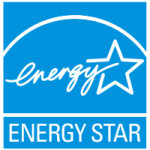In last week’s blog post, I discussed the amount of money I might save by having a tankless water heater installed, and I concluded that I would never see a return on my investment. I received a lot of good feedback from that post, both for and against tankless water heaters. I thought it would be worth bringing up a few few of these points in another post.
Pros
- You can’t put a price tag on going green. There’s no dispute about this – tankless water heaters use less energy. Doing the environmentally responsible thing doesn’t always have a measurable return on investment. I mentioned this last week, but only briefly. Not everything we spend money on will give us a return on our investment – we all know that. After all, what’s the payback period on a sofa?
- Tankless water heaters make sense for a cabin / vacation home. Traditional water heaters have a ‘vacation’ setting, but I’ve heard it’s a bad idea to use this setting, because it greatly increases the potential for legionella pneumophila growth. Having a tankless water heater installed in one of these settings would result in much more than a 25% fuel savings.
 Energy Star Tax Credit. This $300 tax credit which includes tankless water heaters, expires December 31, 2011. I’m guessing we’ll see another one show up when this one ends.
Energy Star Tax Credit. This $300 tax credit which includes tankless water heaters, expires December 31, 2011. I’m guessing we’ll see another one show up when this one ends.- Fuel costs will continue to rise. As we all know, fuel costs continually increase. If fuel costs tripled in the next 20 years at a linear rate, a tankless water heater would actually give me a return on my investment, using the numbers from the example last week.
Cons
- Low water flow = no hot water. If there isn’t enough hot water flow, a tankless water heater just won’t turn on. One person even commented that they had to turn on the hot water faucet at their bathroom sink and leave it on the entire time they took a shower, or they couldn’t get hot water. For instance, Rinnai tankless water heaters need at least .6 gallons per minute, Bosch units need .65 gallons per minute, and Rheem at least .4 gallons per minute of hot water flow to kick on.
- The cold water sandwich. If you think gefilte fish sandwiches sound bad, just try one of these. The cold water sandwich effect is something that happens with every tankless water heater. When the faucet is turned on, off, and on again, you’ll end up with a slug of cold water interrupting your hot water flow. Some tankless water heaters require the call for hot water to last for at least three seconds before the burners turn on, so there can be several layers of hot and cold water in the pipes. This doesn’t exist with traditional water heaters. You can read more about this at Rinnai’s web site – they claim to have nearly eliminated the cold water sandwich, but not completely.
- The long wait for hot water. I already have to wait for approximately forever to get hot water at my kitchen sink, but the wait would be even longer with a tankless water heater. One interesting solution that I heard a plumber mention was to install a dedicated 3/8″ supply line to his kitchen sink from the water heater. He claimed that this still provided just as much water flow, and made the wait much shorter. I’ve considered doing this at my own house, although this is technically a code violation.
For me, a tankless water heater doesn’t make sense just yet. I’m waiting for the price gap between tankless water heaters and standard water heaters to get a little smaller. I have the temperature cranked up on my water heater with a tempering valve installed, so I never run out of hot water. Maybe by the time my kids are teenagers I’ll have a different opinion of tankless water heaters.
Reuben Saltzman, Structure Tech Home Inspections – Email – Home Inspector Minneapolis
